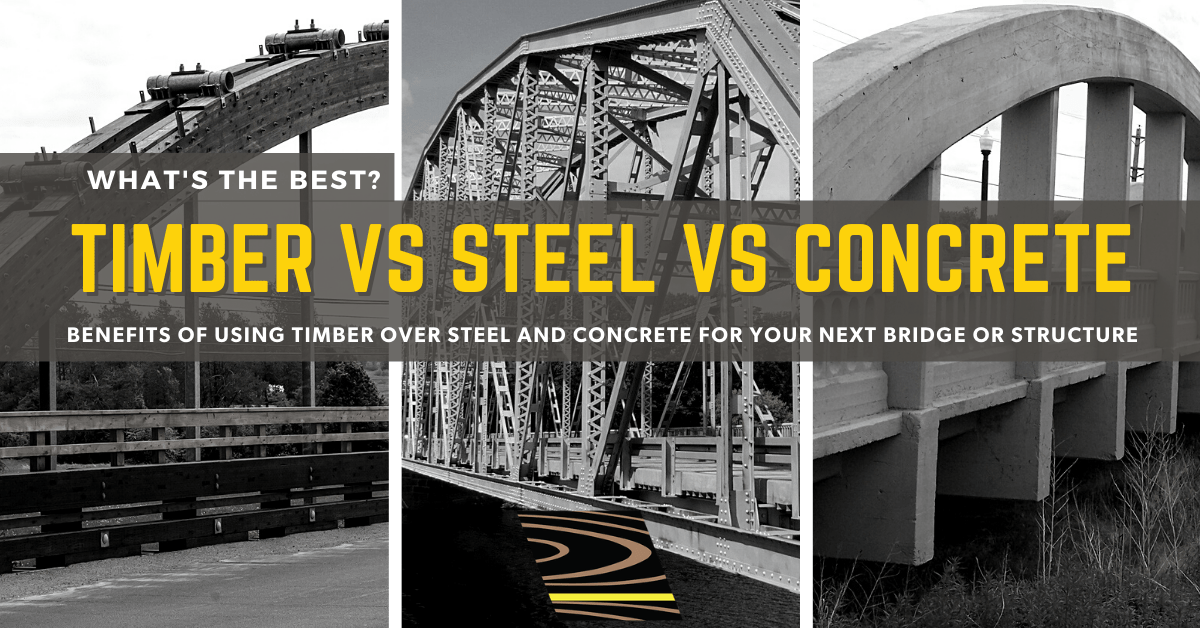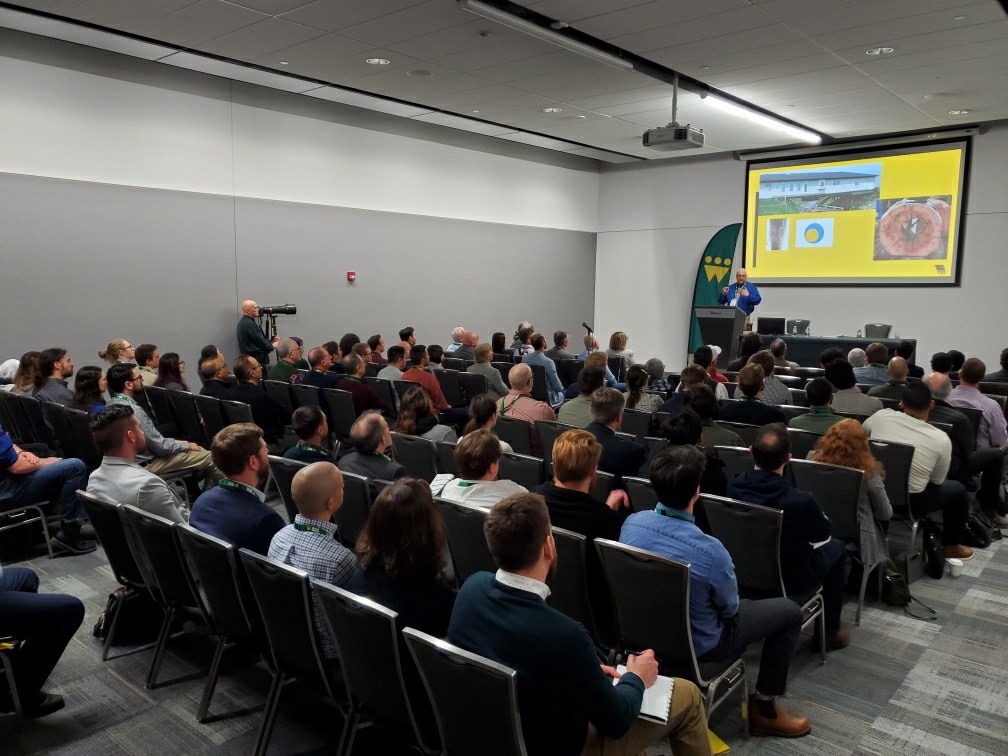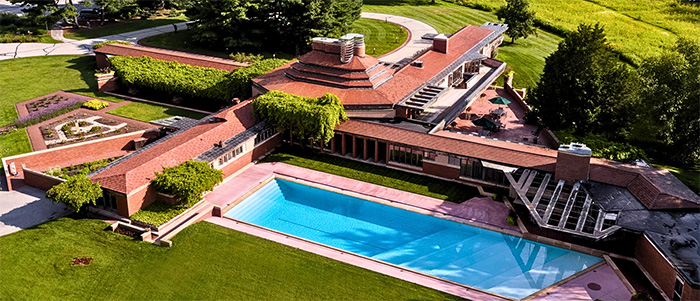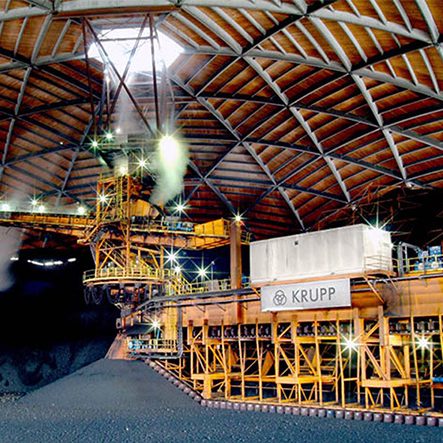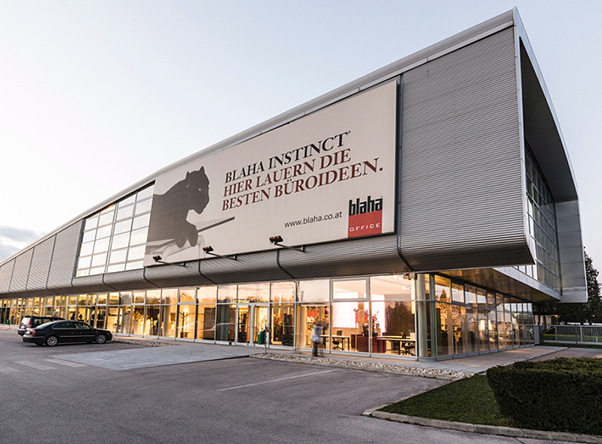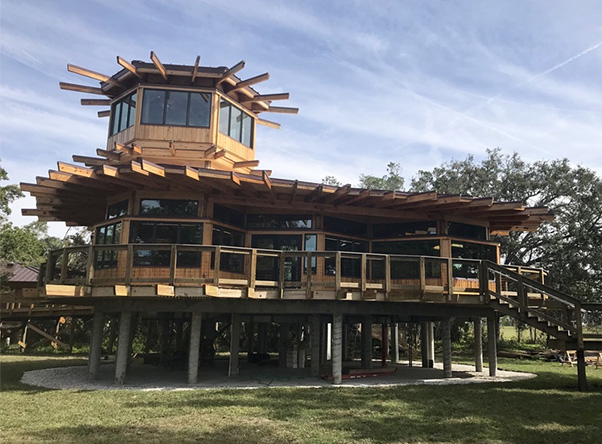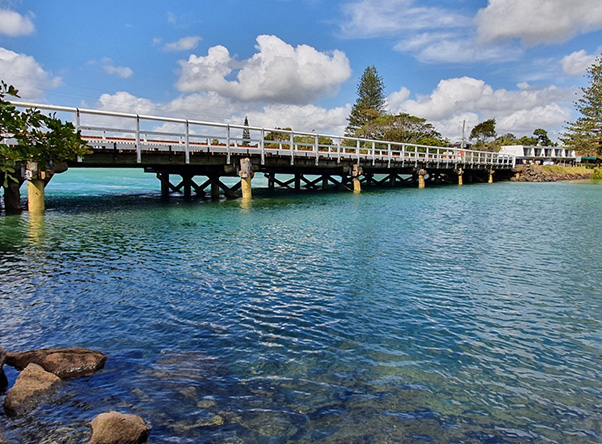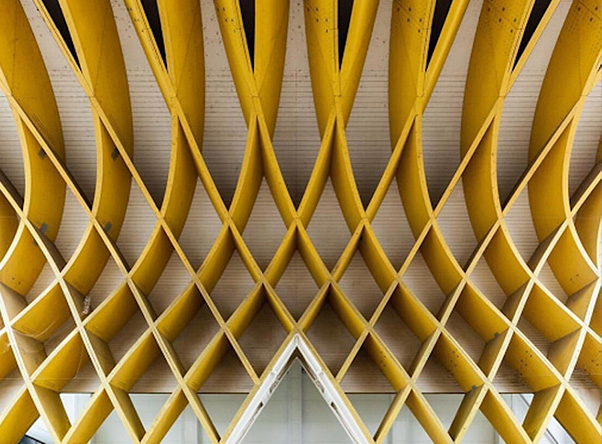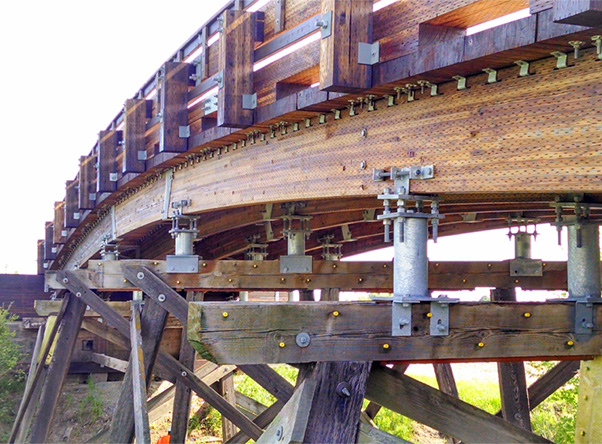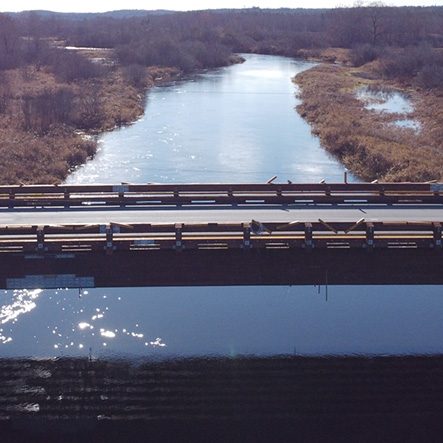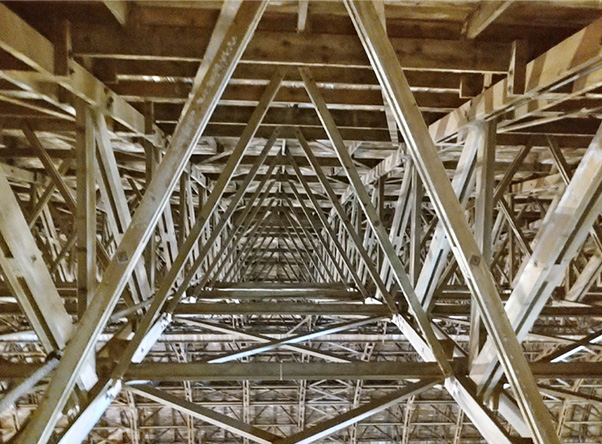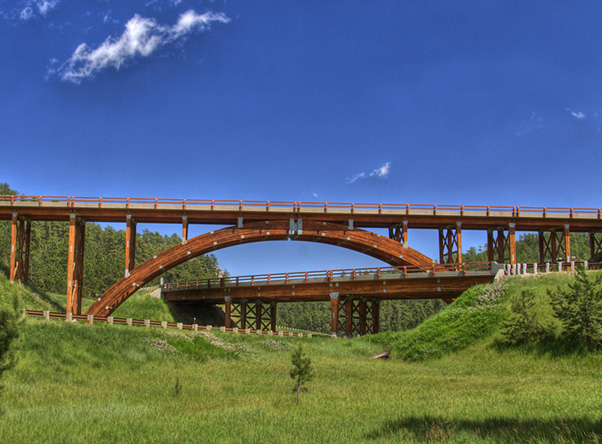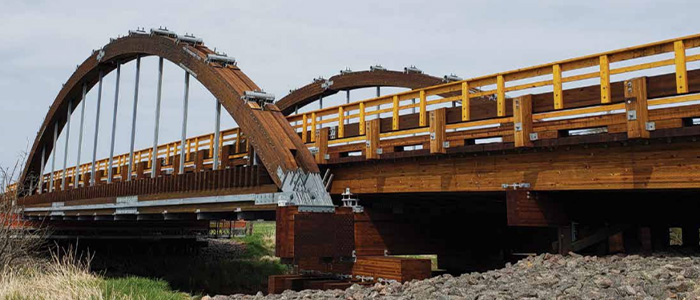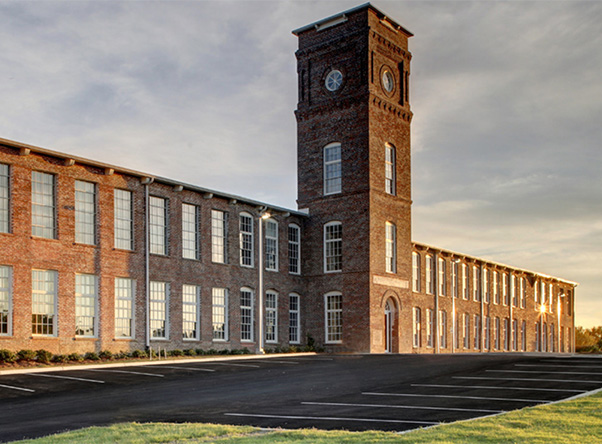Timber Bridges weren’t meant for highways and railways!
“Timber bridges were for Model T’s and steam locomotives! They aren’t used anymore!”
That was the retort from a citizen in a small rural town in Murrindindi Shire in Victoria, Australia. Australia is a country with 43,800 hardwood timber bridges. More than the total number of hardwood timber bridges in all the G8 industrialized nations.
A chief engineer for one of the largest railways in the United States said;
“I live for the day when I see the last timber bridge replaced by a concrete bridge! I have 786 left in our railway system and I am trying to get them all replaced before I retire!”
This is from an engineer in the United States, have nearly 700,000 timber bridges in the railway and highway system. One railway in the United States has nearly 20,000 timber bridges alone.
One man in Canada who asked;
“Are there anymore timber bridges? We only build with steel and concrete and have for many years. Wood doesn’t last long enough to be used for bridges”.
This in a country where they have the largest per-capita production of softwood lumber of any country in the world.
It’s always interesting to see people with this mindset. Timber bridges have been around for thousands of years and that much of the 18th and 19th century depended on them. In fact that in many parts of the world that people still grow their timber bridges.
See photographs below:

In the depths of northeastern India, in one of the wettest places on earth, bridges aren’t built — they’re grown.

Grown from the roots of a rubber tree, the Khasis people of Cherapunjee use betel-tree trunks, sliced down the middle and hollowed out, to create “root-guidance systems.” When they reach the other side of the river, they’re allowed to take root in the soil. When given enough time, a sturdy, living bridge is produced.
The root bridges, some of which are over a hundred feet long, take ten to fifteen years to become fully functional, but they’re extraordinarily strong. Some can support the weight of 50 or more people at once.
One of the most unique root structures of Cherrapunjee is known as the “Umshiang Double-Decker Root Bridge.” It consists of two bridges stacked one over the other.

Because the bridges are alive and still growing, they actually gain strength over time, and some of the ancient root bridges used daily by the people of the villages around Cherrapunjee may be well over 500 years old.

But these are not the only bridges built from growing plants. Japan also has its own form of living bridges.
One of Japan’s three “hidden” valleys, West Iya is home to the kind of misty gorges, clear rivers, and thatched roofs one imagines in the Japan of centuries ago. To get across the Iya River that runs through the rough valley terrain, bandits, warriors and refugees created a very special – if slightly unsteady – bridge made of vines.

Wisteria vines — one of the strongest vines known — were grown to extraordinary lengths from either side of the river. Once the vines had reached a sufficient length they were woven together with planking to create a pliable, durable and most importantly, living piece of botanical engineering.
The bridges had no sides, and a Japanese historical source relates that the original vine bridges were so unstable, those attempting to cross them for the first time would often freeze in place, unable to go any farther.
Three of those vine bridges remain in Iya Valley. While some (though apparently not all) of the bridges have been reinforced with wire and side rails, they are still harrowing to cross. More than 140 feet long, with planks set six to eight inches apart and a drop of four-and-a-half stories down to the water, they are not for the acrophobic.
Some people believe the existing vine bridges were first grown in the 12th century, which would make them some of the oldest known examples of living architecture in the world.
“Timber bridges don’t last”
People who say, “timber bridges don’t last”, haven’t seen old timber bridges like the ones that have been in service for hundreds of years like the one in Hartland, New Brunswick, Canada. It is the longest covered bridge in the world and has been in service for over a century. Concrete bridges haven’t lasted quite as long.
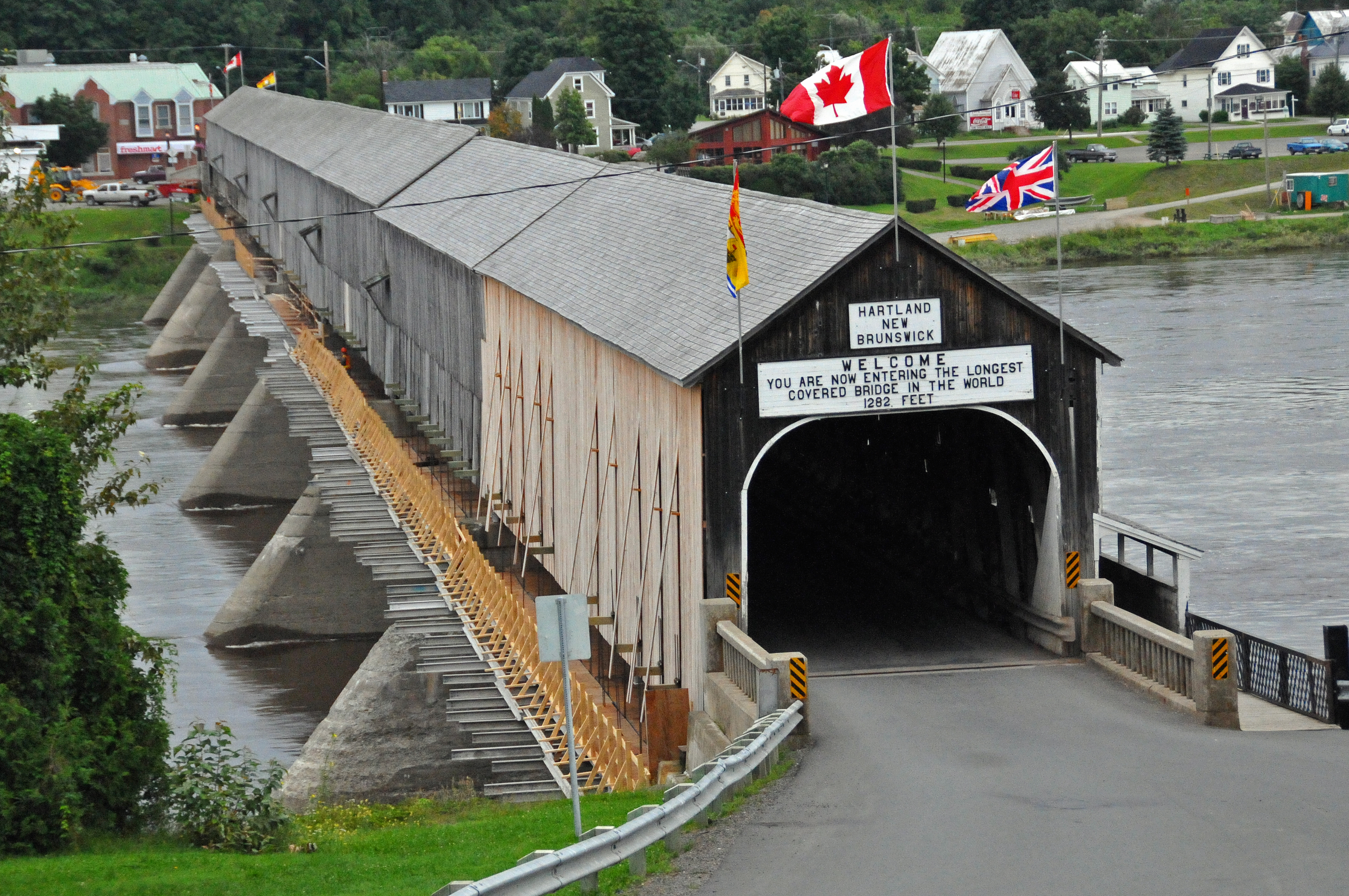
“But concrete and steel bridges don’t fail.”
Not true. Timber bridges that fail, are usually due to catastrophic events such as floods. Steel and concrete bridges actually do fail. Ask the people of St. Paul/Minneapolis Minnesota if steel bridges fail!
Here are some facts for you to consider about timber bridges:
- Timber bridges that are treated with light solvent Pentachlorophenol, after all machining is completed and that are incised before treatment have a design lifetime, as developed by proven and accepted bridge life cycle analysis methods of 75 years versus 50 for concrete.
- Steel bridges require 22 times more energy to construct than an equivalent load capacity timber bridge. This does not consider the carbon conversion capabilities of regenerated timber utilized in the manufacture of timber bridges where wood is a CO2 converter and Steel is a net producer of CO2.
- Concrete bridges require 16 times more energy to construct than an equivalent load capacity timber bridge. This does not consider the carbon conversion capabilities of regenerated timber utilized in the manufacture of timber bridges where wood is a CO2 converter and Concrete is a net producer of CO2.
- Timber bridges are more forgiving than concrete and steel bridges and secondary redundant systems in timber bridges are capable of carrying more load than similar systems in steel and concrete bridges.
- Timber bridges outperform steel and concrete bridges in earthquakes by a wide margin due to their low Modulus of Elasticity which absorbs acceleration loads from earthquakes without failing.
- Timber bridges cost less than steel and concrete bridges by a wide margin on a dollar for dollar basis. Timber bridges span further on a single span and cost 40 to 60% of a typical concrete bridge.
- The dead weight savings in stringer weight between a fiber reinforced glulam stringer and precast reinforced concrete stringer reduces the size of the abutments and piers enough to cover the cost of the fiber reinforced glulam stringers.
- The dead weight savings of a glulam transverse deck, fiber reinforced glulam stringer bridge over concrete is so large that the timber bridges can be installed in sensitive solid bearing areas whereas concrete bridges cannot.
- Fiber reinforced glulam stringer bridges can be installed to cover larger spans than concrete due to the reduced dead weight. Most people don’t realize that the 3rd, 4th and 5th largest buildings (from a clear span point of view) are timber because of the dead weight savings of the carry beams. Concretes own dead weight often becomes its single biggest design load.
- On a pound for pound basis, wood is much stronger than steel or concrete.
- Steel bridges and concrete bridges require large expansion joints to accommodate thermal coefficient of expansion of steel. Wood has a coefficient expansion of three orders of magnitude less than steel.
- Wood can be installed in many different climates during anytime of the year whereas steel and concrete have limitations that require expensive assembly and construction methods.
People often compare timber bridges that are hundreds of years old against reinforced concrete bridges that are 40 years old and say; “concrete lasts so much longer.” These old timber bridges have been giving great service for three and four times longer than the concrete bridges with poor maintenance practices and little, or no upkeep. If concrete bridges were treated the way timber bridges are treated, who knows how short their life would be. It’s also interesting that the old timber bridges (that have been lasting so long) were designed for significantly lower loads, yet they have continued on in service, carrying much higher loads than they were built to carry. If concrete bridges were overloaded the way the old timber bridges are, the concrete bridges longevity would be considerably shorter than what it is now.
Converting CO2, providing aesthetic appearance, serving communities for hundreds of years, and continuing to give their best in spite of overloading and poor inspection practices and maintenance.
But there is hope. There is a huge trend today towards timber bridges. There are many examples of timber bridges around the world, including Japan, USA, Canada, and Europe built in the last few years. New exciting designs that are winning environmentally sound awards and recognition. These bridges are combining the great traditions of the past by utilizing timber with the modern high strength fibers of the future. These new bridges will be the materials of the future.
Governments in many areas of the world are embracing modern reinforced wood technologies to restore the look of old round log stringer bridges with timber and high strength fibres. These methods will preserve the look and put a light weight reinforced timber system in place to hold the beauty of the old bridge in place and upgrade the services that it offers. The old bridge has given great service to the community and deserves nothing less than to be treated properly!
Timber has been an excellent material for the construction of bridges for thousands of years and will continue to be for thousands more. Further, the old timber bridges still in service will stay in service much longer due to proper maintenance techniques now being adopted by government transport departments. New non-destructive testing techniques will allow the proper assessment of timber bridges. Advanced fiber technologies combined with diffusing methods for onsite improvement of wood decay resistance, will mean that our existing bridges can be upgraded to carry higher loads and last longer to compete with other materials utilized in bridge construction.

